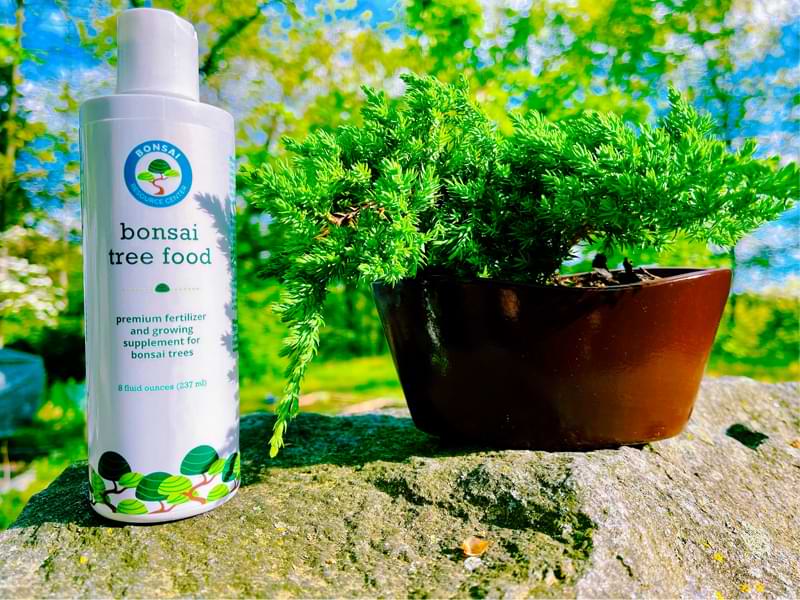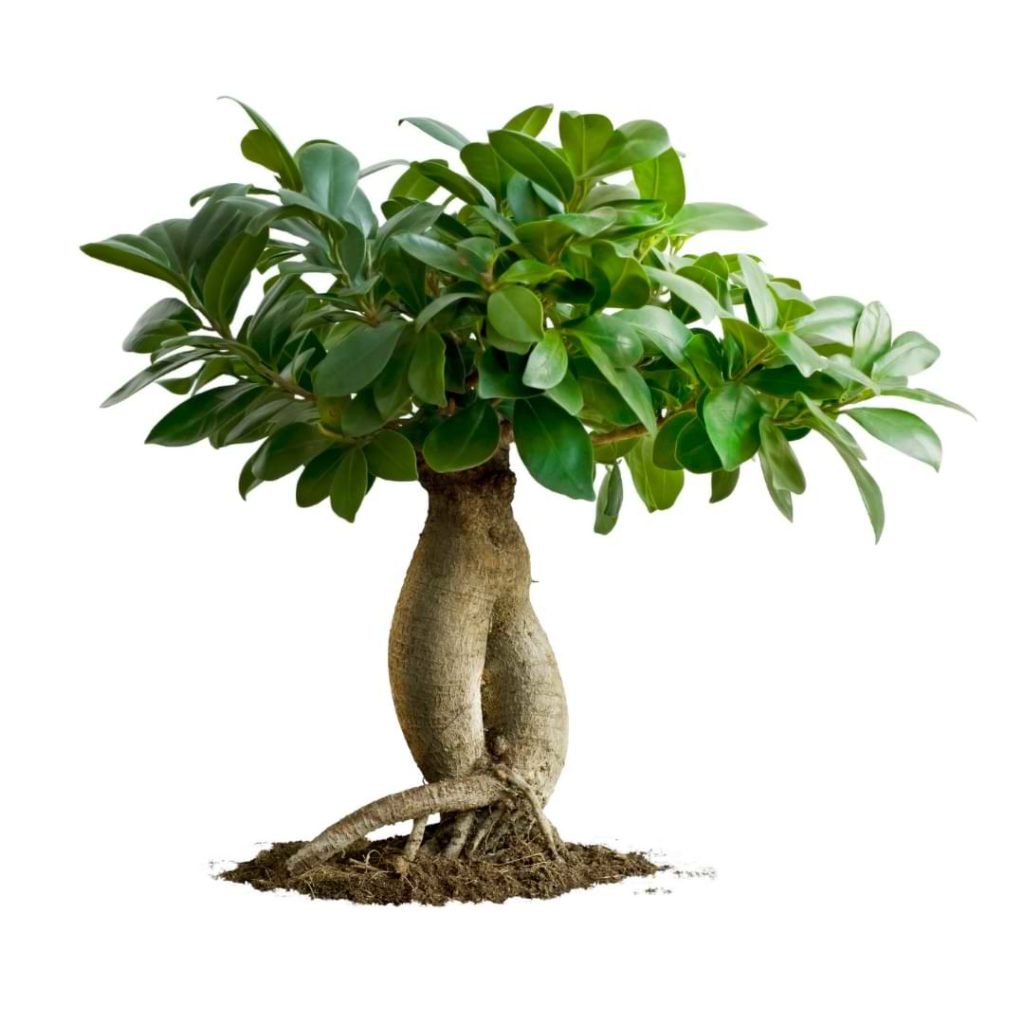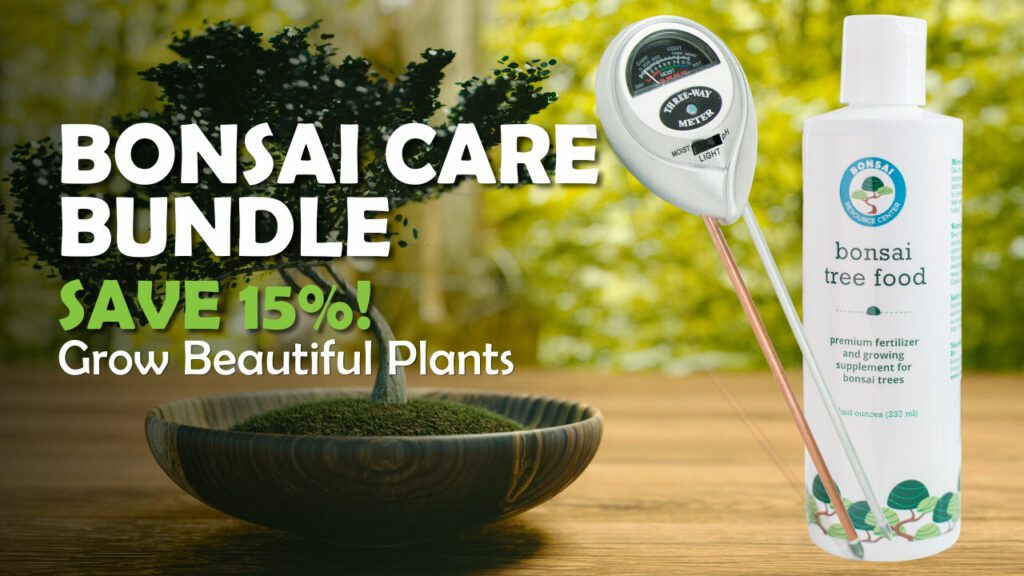When you hear the word “ficus,” you probably think of a fiddle leaf fig or that big potted tree in the lobby of your office building. But certain ficus species can actually make great bonsai trees!
Bonsai ficuses are beautiful and satisfying to care for, and many beginners find them easier to work with than many other types of bonsai. These trees are also ideal for growing indoors because they tolerate lower light better than many other bonsai trees.
Let’s take a closer look at different types of bonsai ficuses and how to care for them!
Different Types of Bonsai Ficus Trees
There are hundreds, possibly thousands, of ficus species out there, and about a dozen of them are suitable for bonsai (though there are many varieties of those species).
Some of the most common types of bonsai ficus are:
- Ficus retusa, microcarpa variety (common fig or Chinese banyan)
- Ficus benjamina (ficus benjamin or weeping fig)
- Ficus ginseng
- Ficus salicifolia (willow leaf fig)
- Ficus macrophylla (Moreton Bay fig)
These varieties are all pretty common in the bonsai world, so you can find them just about anywhere bonsai trees are sold.
How to Care for a Bonsai Ficus Tree
Ficus trees generally enjoy the same care standards, though some varieties might have slightly different light preferences. In general, they’re easy to care for!
Light
Place your bonsai ficus tree in a bright, preferably south-facing window where it will get plenty of direct sunlight. If you don’t have a window that receives several hours of bright sunlight every day, you may want to supplement with a grow light.
Bonsai ficus trees can also thrive in an east- or west-facing window, as they tolerate lower light conditions than other types of bonsai, but it’s still best to give them the best light you can.
Potting and Soil
Use a soil mix made especially for bonsai trees or read our guide to soil for bonsai trees to make your own.
Choosing a bonsai pot is not as simple as picking out a cute planter for a regular houseplant. Potting is a crucial element to the art of bonsai and requires care and thought. Here’s our guide to choosing a bonsai pot.
That being said, you should be able to leave your ficus bonsai in its original pot for at least a few months before it will need to move on. Young bonsai trees typically stay in a starter pot until they establish a strong root system before they can be moved to a more permanent display pot.
Some well-maintained bonsai can stay in their pots indefinitely!
Water
While it’s tempting to simply water on a schedule, it’s important to learn how to tell when your ficus is actually ready for a drink!
Bonsai ficus trees may have different watering needs in the winter than in the summer, and their lighting conditions and the temperature and humidity of their environment can also affect their watering requirements.
You’ll want to keep the soil evenly moist. If the topsoil is dry and the soil feels just barely damp 2 inches down, water your plant thoroughly and allow it to drain completely. It’s also a great idea to use a moisture meter to gauge when your bonsai ficus is ready to be watered. You’ll probably find yourself watering more often in the summer and less frequently in the winter.
Be careful not to water so often that your soil is consistently soaked, or you run the risk of your plant developing root rot or other health problems related to overwatering.
Temperature and Humidity
These are tropical plants, so they prefer warmer temperatures and higher humidity levels.
Keep the temperature consistent, preferably around 70 degrees Fahrenheit. Never let the temperature drop below 60 degrees.
While ficus species with waxy leaves, like the ficus ginseng, can tolerate lower humidity, they will thrive when the humidity in their environment is on the high side.
Unless you live in a fairly humid environment and don’t run the heat or AC often, you may want to sit your bonsai ficus on a humidity tray or set up a humidifier nearby.
When outdoor temperatures are consistently above 60 degrees, you can put your ficus bonsai outside in full sun if you live in a fairly humid environment. If not, keep it indoors where you have more control over humidity levels.

Fertilizer
During the growing season, fertilize weekly to provide the nutrients your bonsai ficus needs to stay healthy but not necessarily to grow larger.
You can stop fertilizing or cut back to fertilizing once every month during the stagnant season.
Always use a gentle, urea-free fertilizer with a 3-3-3 NPK ratio, and preferably one specifically formulated for bonsai trees like Bonsai Tree Food.
Bonsai With Us!
Bonsai is a creative and rewarding hobby, and ficus trees are a great plant to begin with if you’re just getting started with bonsai.
Make sure to check out our resources for caring for your bonsai trees and enriching your life with this wonderful practice!
5 Easy Tips to Master Advanced Bonsai Tree Care
How to Keep Your Bonsai Tree Small



